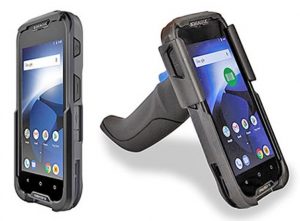Keeping accurate inventory counts in your pharmacy point-of-sale system is important. It helps you understand your inventory value, identify shrinkage and make smart ordering decisions. Important as it may be, for many, the thought of Inventory counting brings with it a slightly queasy feeling or an impending sense of dread.
We don’t blame you. The idea of inventory counting can certainly be daunting. Luckily, with the right processes, considerations, and tools at your disposal, you can take the pain out of inventory management and make inventory counting a crazy-easy part of your routine.
The first thing to understand about inventory counting is that it is absolutely the last inventory tool you should use in your POS system. But if inventory counting is the last, what’s the first?
Here’s how to get ramped up to start your inventory counting process.
Make sure all items are in the system.
Having a clean, accurate database is key to success. Make sure all the items you sell are in the system and include accurate retail pricing and costs. Inventory counting without costs mean that you cannot accurately identify the value of your inventory.
Say goodbye to item stickers.
The days of opening the totes and pulling out the sheets of item stickers should be long gone. Use shelf labels instead. This is easier and much more accurate.
Process price update files where possible.
Make sure that processes for price updates are in place with your wholesalers where possible. Ideally, you can automate price updates through your point-of-sale system and Vendor EDI with your wholesaler.
Make sure your entire inventory process is aligned.
Use purchasing & receiving processes to properly process your inventory and maintain accurate inventory information.
Use product reports to make business decisions.
So much of the value of your point-of-sale system hinges on making smart business decisions based on the reports you have available to you. For example, items with no sales or data anomaly reports to show items with incorrect costs or no costs. Make sure you understand how to access and act on this important data.
Now… let’s say all of your infrastructure is in place and you’re ready to put the final piece of the puzzle in place. Here are the final considerations as you begin to build out your inventory counting processes.
There’s no one size fits all approach to inventory counting.
Be prepared to be flexible because as we all know things can change rapidly in any pharmacy business. Your approach to inventory counting depends on things like staffing levels, the size of your front end, and whether you plan on running inventory counting during business hours or after the pharmacy closes. And when all else fails, we have experts on staff that can help you design a program suited to your pharmacy environment.
Decide on Perpetual Inventory.
Notice the phrasing here. There’s simply no choice between annual inventory (that awful process where you scan every item in the store in a single day once a year) and perpetual inventory, (where you do a section at a time on a regular basis.) Not only does everyone hate annual inventory (including customers trying to shop while you do it) but it’s far less accurate than perpetual inventory. Plus, perpetual inventory is easy to make part of the routine. Just break the store into sections and assign a couple of team members to run inventory on a rotating basis. For example. Break the store down into 4 foot sections and then have a team member run counting on one section each day. Aim to run through the entire store in this manner at least twice a year, or more if you can. This method takes 10-15 minutes a day and removes stress from the equation.
Decide if you are using bin locations.
Bin location just means separating the store by section. It’s not necessary for stores with a small front end but does make lots of processes, including inventory, much easier. For example, if you have the store separated by Bin locations you can print the labels sorte
d by Bin order to make it easy to walk the shelves and place new labels.
Get the proper tools.

Having a handheld scanner that you can use to scan the item, enter the quantity and repeat is the fastest and easiest way to do inventory counting. If you’re serious about making inventory counting an easy routine, one of these scanner units will make all the difference.
Curious to know more? If you’d like to take a look at how RMS inventory counting works, and hear more about process recommendations from RMS Founder & CEO Brad Jones, check out this 30 minute tutorial.